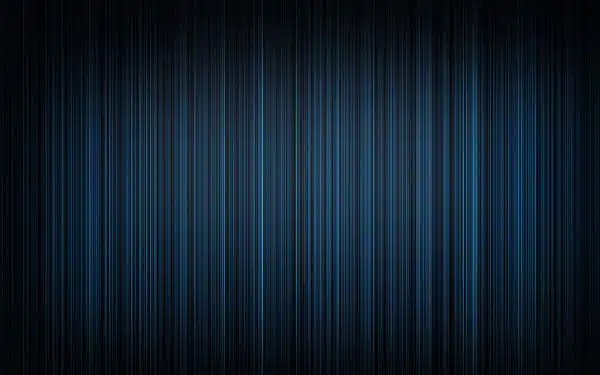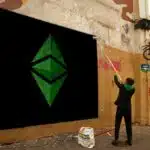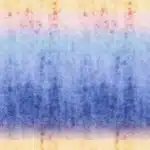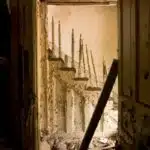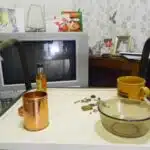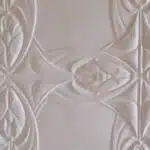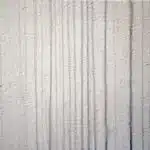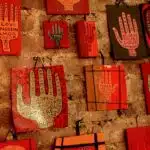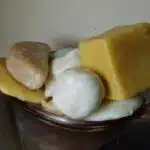Removing wallpaper from the walls can be a daunting task, especially for those who have never done it before. It requires patience, attention to detail, and some basic tools. However, with the right approach and techniques, anyone can remove wallpaper without damaging their walls or spending a lot of money.
As an experienced wallpaper removal expert, I have helped many homeowners remove their old wallpaper in a safe and efficient way. In this article, I will share my knowledge and expertise on how to remove wallpaper step-by-step. Whether you are planning to repaint your room or install new wallpaper, this guide will provide you with everything you need to know to get the job done right. So let’s dive in and learn how to remove wallpaper like a pro!
Preparing The Room And Gathering Supplies
Before beginning the process of removing wallpaper, it is important to prepare the room and gather all necessary supplies. First, choose a time when you will have uninterrupted access to the space for a few days as removing wallpaper is a time-consuming task. Cover the floors with drop cloths or plastic sheets to protect them from water damage or debris. It is also advisable to remove any furniture or fixtures that may be in the way.
Next, gather all tools and materials required for wallpaper removal. These typically include a steamer, scraper, scoring tool, bucket, sponge, and wallcovering adhesive remover. While hiring professionals might seem like an easy solution, it can be costly and unnecessary for most homeowners.
When choosing wallpaper removal tools and supplies, it is important to pick high-quality products that will make the job easier and more efficient. Invest in a good quality steamer as it is one of the most crucial tools for wallpaper removal. A low-quality steamer may not produce enough heat which means that it will take longer to loosen up the glue on your walls. By properly preparing your workspace and gathering all necessary tools and materials before starting your wallpaper removal project, you set yourself up for success.
Transitioning into testing the wallpaper for adhesion: Before getting started on stripping off your old wallpaper, you should test the adhesion level of your current wallcovering to avoid damaging your walls during removal.
Testing The Wallpaper For Adhesion
To ensure that the wallpaper will come off easily, you must first test its adhesion. This is done by peeling back a corner of the wallpaper and seeing if it lifts easily from the wall. If it does, the wallpaper should come off without too much trouble. However, if it does not come off easily, you may need to use additional tools or techniques to remove it.
Testing accuracy is critical at this stage because if you fail to identify any areas where the wallpaper is still firmly attached, you may end up damaging your walls while attempting to remove it. This can lead to costly repairs and a longer project timeline. It is essential to be thorough in your testing process and not rush through this step.
Necessary tools for testing adhesion include a putty knife or scraper and a spray bottle filled with warm water mixed with a small amount of dish soap. Keep these items nearby as you work through each section of the wallpapered area, checking for any spots that may require extra attention before proceeding with removal.
Moving on from testing adhesion, the next step in removing wallpaper is tackling any borders that may be present. With careful attention and patience, you can successfully remove all traces of wallpaper from your walls without causing damage or frustration.
Removing The Wallpaper Border
When it comes to removing wallpaper borders, there are a few methods you can use. One of the most effective ways is using a heat gun. This tool can help loosen the glue that holds the border in place, making it easier to remove. Simply hold the heat gun about 6 inches away from the border and move it back and forth until you feel the adhesive start to soften. Then, use a putty knife or scraper to gently pry off the border.
If you prefer chemical-free removal methods, there are also options available. You can try soaking the border with warm water mixed with fabric softener or vinegar for about 15 minutes before attempting to remove it. Another option is using a homemade solution made from equal parts of warm water and dish soap. Apply this mixture to the border and let it sit for a few minutes before trying to scrape it off.
No matter which method you choose, be sure to take your time and work slowly. Rushing through this process can damage your walls or cause unnecessary frustration. Once you have successfully removed the wallpaper border, you can move on to scoring the wallpaper to continue with your project.
Scoring The Wallpaper
Scoring the wallpaper is a crucial step in removing it. Some people believe that scoring the wallpaper creates tiny holes on the surface, thus allowing water or steam to penetrate through and loosen the adhesive easily. However, this theory is not entirely true. Scoring does create holes, but it also makes the surface rougher, making it difficult for the scraper to glide through and remove the wallpaper smoothly.
To score or not to score depends on several factors like the type of wallpaper, its age, and texture. If your wallpaper has a vinyl coating or is waterproof, scoring may be necessary to allow steam or water to reach underneath. But if your wallpaper is old and brittle or has already started peeling off at some places, then scoring may cause more damage than good.
If you decide to score your wallpaper before removing it, here are three things you need to keep in mind:
- Use a wallpaper scorer with sharp blades and apply even pressure while scoring.
- Do not press too hard as that might damage the wall underneath.
- Score only once in vertical lines rather than crisscrossing as that will create unnecessary holes and make the job harder.
Using a wallpaper steamer can help soften the adhesive and make removal easier. But patience is key when using this method. The steamer needs time to heat up before use, and you need to hold it against each section of wallpaper for at least 30 seconds before scraping it off. Rushing through this process may result in incomplete removal or damage to your walls.
Next up, we will discuss how applying a wallpaper stripper can assist in removing stubborn residue left behind after removing wallpapers without damaging your walls.
Applying Wallpaper Stripper
- Prior to applying wallpaper stripper it is important to ensure that the surface is properly prepared. This typically involves removing loose wallpaper and cleaning the surface.
- The next step is to apply the stripper to the surface. This is best done with a brush, roller or sprayer depending on the type of wallpaper.
- After application, the stripper should be allowed to sit on the wallpaper for a period of time to loosen the adhesive.
- Finally, the wallpaper should be removed with a stripping knife or other suitable tool.
Preparing The Surface
As a wallpaper removal expert, I understand the frustration that comes with trying to remove old, outdated wallpaper. However, preparing the surface before applying any wallpaper stripper is crucial for a successful removal process. This step involves several tools and safety precautions that should not be overlooked.
Firstly, ensure that you have all the necessary tools needed for preparing the surface. These may include a scraper, sandpaper, sponge, bucket of warm water, and possibly even a steamer. It is important to have these tools ready and easily accessible before you begin the removal process as it can get messy and time-consuming.
Secondly, safety precautions must be taken seriously when preparing the surface. Wear protective gear such as gloves and eye goggles to avoid any injuries or skin irritation from chemical-based strippers. Also, turn off all electrical outlets in the room to prevent any accidents or potential hazards during the removal process.
Lastly, take your time and be patient when preparing the surface. This step may take longer than anticipated but rushing through it could result in damage to your walls or even injury. Use gentle pressure when scraping away any loose wallpaper or adhesive residue and always test a small area first before moving on to larger sections of the wall.
In conclusion, properly preparing the surface before applying any wallpaper stripper is essential for a successful removal process. Utilize all necessary tools, take safety precautions seriously and allow yourself plenty of time to complete this step thoroughly. By following these guidelines, you will have a much smoother experience removing your old wallpaper and creating a fresh new look in your space!
Applying The Stripper
Now that we have prepared the surface for wallpaper removal, the next step is to choose and apply the stripper. Choosing the right type of stripper is crucial to ensure that it effectively removes the wallpaper without damaging your walls. There are chemical-based and natural-based strippers available in the market, and each has its advantages and disadvantages.
When applying the stripper, it is essential to take safety precautions seriously. Chemical-based strippers can be hazardous if not handled properly, so always wear protective gear such as gloves, goggles, and a mask. Also, make sure to open windows or use a fan for ventilation to avoid inhaling toxic fumes.
Once you have chosen the appropriate stripper and taken necessary safety measures, begin by applying it generously onto the wall using a brush or roller. Make sure to cover all areas thoroughly, including corners and edges. Leave it on for about 15-20 minutes, or as instructed on the product label. During this time, you may notice some bubbling or loosening of the wallpaper.
By following these guidelines when choosing and applying the stripper for your wallpaper removal project, you will achieve a successful result without any harm caused to your health or home. Remember always to prioritize safety and take your time during each step of the process for optimal results.
Letting The Stripper Soak In
After applying the wallpaper stripper, it is important to let it soak in for a sufficient amount of time. This maximizes its effectiveness and makes removing the wallpaper much easier. It is recommended to wait at least 15 minutes before attempting to remove the wallpaper.
During this waiting period, it’s important to avoid common mistakes such as trying to rush the process or using too much force when scraping off the wallpaper. Rushing can lead to incomplete removal and cause damage to the wall surface. Using excessive force can also lead to damage, such as gouges or scratches on the wall.
Once you’ve allowed enough time for the stripper to soak in, you can begin removing the wallpaper in sections. This involves using a scraper tool and gently lifting one corner of a section of wallpaper. Then, pulling it down slowly while continuing to scrape underneath with a flat edge tool. Repeat this process until all sections of wallpaper have been removed from the walls.
Removing The Wallpaper In Sections
Picture a beautiful painting on the wall, full of intricate details and vibrant hues. Now imagine that painting is covered by an unsightly layer of wallpaper. Just like taking off a protective cover from a masterpiece, removing wallpaper can be a daunting task that requires patience and precision. To make the process as smooth as possible, here are some tips for removing wallpaper in sections.
Before starting, gather the necessary tools needed to complete the job efficiently. You will need a scoring tool to create small holes in the wallpaper, which allows water or steam to penetrate through it. A wallpaper stripper solution or fabric softener mixed with warm water will also be necessary to loosen the adhesive bond between the wallpaper and wall. Additionally, have a putty knife or scraper on hand to remove any stubborn pieces.
To remove wallpaper in sections, start at one corner of the room and work your way across. Score a small section of the wallpaper with your scoring tool and then apply your chosen solution generously with a sponge or spray bottle. Wait for several minutes before using your putty knife or scraper to gently lift away the loosened paper. Repeat this process until you have removed all layers of paper from each section.
Efficiency is key when removing wallpaper in sections, so here are some tips for making things go smoothly. Use long strokes when applying your solution and avoid saturating one area too much as it can damage drywall beneath it. If possible, try peeling off large sections of paper at once instead of piecing them off bit by bit to save time and energy. With these tips in mind, you’ll be able to remove that unwanted layer of wallpaper and uncover the beauty beneath it without breaking a sweat!
Scraping Off Stubborn Pieces
After removing the wallpaper in sections, you may still find some stubborn pieces that refuse to budge. In this case, it is best to use a scraper to remove them. However, be careful not to damage the wall underneath. To prevent this from happening, wet the area with warm water and let it soak for a few minutes before using the scraper.
Another effective method for removing stubborn wallpaper is by using steam. This involves using a steamer to soften the glue holding the wallpaper in place. Once softened, the wallpaper can easily be removed with a scraper or putty knife. However, this method requires more equipment and time than simply using warm water and a scraper.
If neither of these methods works, you may need to use a chemical solution for removal. Be sure to follow the manufacturer’s instructions carefully as different solutions have varying application times and safety precautions. It is also important to wear protective gloves and goggles when handling these solutions as they can be harmful if they come into contact with skin or eyes.
Now that all of the wallpaper has been removed, it’s time to clean off any remaining residue on the walls. This will ensure that your new paint or wallpaper adheres properly without any bumps or lumps underneath. To do this, use warm water and soap or a vinegar solution and scrub gently with a sponge or cloth until all residue is gone.
Cleaning The Walls Of Residue
After removing wallpaper, you may be left with stubborn residue on your walls. To effectively eliminate this residue, you will need to have the right cleaning products and techniques. The first step is to assess the type of adhesive used for the wallpaper. Some adhesives can be removed easily with water while others require stronger solutions.
For water-soluble adhesives, mix warm water with a small amount of dish soap or vinegar and apply it to the affected areas using a sponge or cloth. Allow the solution to sit for a few minutes before scrubbing gently in circular motions until the residue is removed. For stronger adhesives, you may need to use a chemical stripper or solvent-based cleaner. Be sure to follow all safety precautions when handling these products, such as wearing gloves and working in a well-ventilated area.
When selecting cleaning products, choose ones that are safe for your walls’ material and finish. Avoid abrasive cleaners that could damage delicate surfaces like painted drywall or plaster walls with decorative finishes. Always test your chosen product on a small inconspicuous area before proceeding with larger sections of the wall. With proper cleaning techniques and effective products, you can remove even the toughest wallpaper residue from your walls without causing any damage.
Transition: Once you have thoroughly cleaned your walls of any remaining adhesive residue, it’s time to move onto sanding them down for a smooth finish.
Sanding The Walls
After cleaning the walls of residue, the next step in removing wallpaper is to use a steamer. This technique involves using a machine that emits hot steam onto the wallpaper, which softens the adhesive and makes it easier to remove. Using a steamer is an effective method for removing stubborn wallpaper, especially those that have been painted over or have multiple layers.
However, if using a steamer is not an option, there are alternative methods for sanding the walls. One option is to use a sanding sponge or sandpaper to gently sand away any remaining adhesive on the wall. Another option is to use a chemical wallpaper remover, which dissolves the adhesive and makes it easier to scrape off with a putty knife. It’s important to note that sanding should be done carefully as it can damage the wall surface.
In summary, using a steamer or other sanding alternatives are effective methods for removing wallpaper from walls. The key is to choose the method that works best for your situation and take care when using any tools or chemicals. Once the wallpaper has been removed, it’s important to inspect the walls for any damage and make necessary repairs before applying new paint or wallpaper.
Repairing Wall Damage
Once the wallpaper has been removed, it’s time to assess the damage that may have occurred to your walls. This is a common occurrence when removing wallpaper, as the process can often result in scratches, gouges, and other forms of drywall damage. Fortunately, repairing drywall is a relatively simple process that can be done with some basic tools and materials.
Firstly, you’ll need to fill any holes or gouges that have been left behind after removing the wallpaper. This can be done using spackling compound, which should be applied using a putty knife. Once the spackling compound has dried, sand it down until it’s smooth and level with the surrounding wall surface. It’s important to note that if there are any large holes or cracks in your drywall, you may need to use joint compound instead of spackling compound.
Next, you’ll want to match the paint on your repaired walls to the rest of your room. This can be tricky, but there are a few methods you can use for color blending. One option is to take a small sample of paint from an inconspicuous area of your wall and take it to a paint store for color matching. Alternatively, you could try mixing different colors together until you find one that matches closely enough. It’s important to remember that even slight variations in color can be noticeable on your walls, so take your time and make sure you get it right.
- Use spackling compound for smaller holes or gouges.
- Use joint compound for larger holes or cracks.
- Consider taking a sample of existing wall paint for color matching.
Now that you’ve successfully repaired any damage caused by removing wallpaper and blended in your new paint color with the rest of the room, it’s time to move on to priming the walls before painting them again. A primer will help ensure that any new paint adheres well to the surface of your walls, and it can also help to hide any remaining imperfections. In the next section, we’ll go over the steps for priming your walls and preparing them for a fresh coat of paint.
Priming The Walls
Sanding is an important step in the wallpaper removal process, as it helps to create a rougher surface for the primer to adhere to.
Before sanding, it is important to make sure that the wall is free from dust or any other debris that might impede the sanding process.
Cleaning the wall is also important as it ensures that the wallpaper can be removed with minimal amount of difficulty and that the wall is free from any dirt or grease that could prevent the primer from adhering to the wall.
Additionally, cleaning will also help to ensure that the wallpaper removal process is as safe and efficient as possible.
Sanding
When it comes to priming walls after wallpaper removal, sanding is an essential step that should not be skipped. Using sandpaper is an effective way to remove any leftover adhesive or texture from the walls, creating a smooth surface for the primer to adhere to. Sanding also helps to rough up the existing paint or drywall, providing better adhesion for the new coat of primer.
To begin sanding, start with a coarse grit sandpaper and work your way down to a finer grit. This ensures that all rough spots are smoothed out and any remaining adhesive is removed. It’s important to use a light touch when sanding, as pressing too hard can damage the wall surface. When removing wallpaper with sandpaper, it’s best to work in sections and move in a circular motion until all areas have been sanded evenly.
After sanding is complete, wipe down the walls with a damp cloth to remove any dust or debris left behind. Allow the walls to dry completely before moving on to priming. By taking the time to properly sand your walls, you’ll ensure that your primer adheres correctly and your new paint job looks professional and polished.
Cleaning
As a wallpaper removal expert, I understand that priming the walls is a crucial step before painting, and cleaning the walls is an essential part of the process. Cleaning the walls before priming ensures that the surface is free from dust, dirt, and debris that could affect primer adhesion. There are several tips and tricks for efficient and effective cleaning to help you achieve a smooth and polished finish.
Before starting to clean the walls, it’s essential to remove any remaining wallpaper adhesive or texture by sanding the surface. After sanding, use a vacuum cleaner or a broom to remove any dust or debris left behind. Then use DIY cleaning solutions such as vinegar and water or dish soap and warm water to clean the walls thoroughly. These solutions effectively remove any dirt or grime without damaging the wall surface.
After cleaning, allow the walls to dry completely before applying primer. This ensures that the primer adheres correctly and provides an even base for paint application. By incorporating proper cleaning techniques into your priming process, you’ll create a professional-looking finish that will last for years to come. Remember these simple steps: sand, clean, primer – for a job well done!
Painting Or Installing New Wallpaper
After priming the walls, the next step is to decide whether to paint or install new wallpaper. Both options have their pros and cons, and it ultimately depends on your personal preference and the style of your space. Painting is a great option for those who want a simple, clean look that can easily be changed in the future. It also allows for more creativity with colors and finishes. However, painting can be time-consuming and requires more prep work than installing wallpaper.
On the other hand, choosing the right wallpaper for your space can create a unique and visually appealing atmosphere. Wallpaper comes in a variety of patterns, textures, and colors, making it easy to find something that suits your taste. It can also hide imperfections in walls better than paint. However, removing old wallpaper can be difficult and time-consuming, especially if it was not installed properly.
If you do decide to remove wallpaper, there are some tips that can make the process easier. First, use a scoring tool to create small holes in the paper so that water or solvent can penetrate through to soften the adhesive. Next, use either hot water or a solvent specifically designed for wallpaper removal to loosen the adhesive. Finally, use a scraper or putty knife to gently remove the paper without damaging the wall underneath.
Transition: Now that we’ve discussed some tips for easier wallpaper removal, let’s delve deeper into how to choose between painting and installing new wallpaper in your space.
Tips For Easier Wallpaper Removal
One of the most effective methods for wallpaper removal is to use steamers. This is particularly useful for those who are looking for a more natural way of removing wallpaper without using chemicals. Steamers work by loosening the adhesive that holds the wallpaper in place, making it easier to remove. To use a steamer, simply fill it with water and let it heat up. Once it’s ready, hold the steamer against the wallpaper until you see it start to loosen.
Another option for removing wallpaper is to use chemical solutions specifically designed for this purpose. These solutions work by breaking down the glue that holds the wallpaper in place, making it easy to peel away. However, you need to be cautious when using these chemicals as they can be harmful if not used properly. Make sure to follow all instructions carefully and wear protective gear such as gloves and goggles.
It’s important to take certain precautions while removing wallpaper, regardless of which method you choose. Always turn off any electrical switches or sockets before starting work, as there’s a risk of electrocution if water gets into them. Additionally, cover any nearby surfaces with plastic sheeting or old towels to protect them from damage. You’ll also need some tools such as a scoring tool or scraper to help loosen and remove the wallpaper without damaging the walls underneath.
Common Mistakes To Avoid
After following the tips for easier wallpaper removal, it is important to avoid common mistakes that can hinder the process. Over scraping and using too much water are two of the most common mistakes that people make when trying to remove wallpaper. Over scraping can damage the wall underneath and create a more difficult surface to work with, while using too much water can lead to mold growth and damage to drywall.
To avoid these mistakes, it is important to have the right tools on hand. One of the best tools for wallpaper removal is a steamer, which uses hot steam to loosen adhesive and make it easier to scrape away. A scraper is another essential tool for removing wallpaper, but it must be used carefully to avoid damaging the wall underneath. Other helpful tools include a scoring tool or sandpaper for roughing up the surface of the wallpaper before applying heat or water.
When removing wallpaper, it is also important to work in small sections at a time and be patient throughout the process. Rushing or trying to remove large sections at once can lead to mistakes and damage. Taking breaks as needed and wearing protective gear like gloves and goggles can also help ensure safety during this process.
By avoiding common mistakes and using the best tools available, removing wallpaper can be made much easier and efficient. With patience and perseverance, even difficult wallpaper removal projects can be completed successfully.
Conclusion
Wallpaper removal can be a daunting task, but with the right preparation and tools, it can be accomplished smoothly. Before beginning, make sure to gather all necessary supplies including a scoring tool, wallpaper stripper, and priming paint. Testing the wallpaper for adhesion is crucial as it determines the best method for removal.
Removing the wallpaper border is the first step followed by scoring the wallpaper to allow for easier saturation of the stripper solution. Applying the wallpaper stripper solution requires patience as it needs time to soak through each layer of paper. Priming the walls after removal ensures that any remaining adhesive residue will not affect new wallpaper or paint applications.
According to a survey conducted by HomeAdvisor, homeowners spend an average of $921 on home improvement projects related to painting and wallpaper installation/removal. This statistic highlights the importance of proper preparation and technique when tackling such projects in order to minimize cost and ensure successful results. Remember to avoid common mistakes such as using too much force when scraping or not allowing enough soaking time for the stripper solution.
As a seasoned expert in wallpaper removal, I recommend taking your time and following each step carefully for optimal results. With these tips in mind, you can successfully remove old wallpaper and transform your space with fresh new decor.
Image Credits
- “Wallpaper” by DyosEL (featured)

